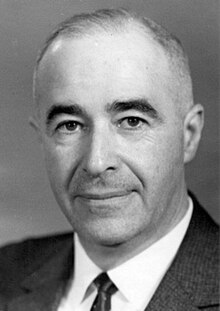| Ilya Lifshitz | |
|---|---|
| Илья Лифшиц | |
 | |
| Born | Ilya Mikhailovich Lifshitz (1917-01-13)January 13, 1917 Kharkov, Kharkov Governorate, Russian Empire |
| Died | October 23, 1982(1982-10-23) (aged 65) Moscow, Soviet Union |
| Alma mater | University of Kharkiv, Kharkiv Polytechnic Institute |
| Known for | Lifshitz tails Lifshitz exponent Lifshitz–Kosevich formula Lifshitz transition Self-averaging spectral shift function supersolidity |
| Awards | Lenin Prize Simon Memorial Prize (1961) |
| Scientific career | |
| Fields | Physics |
| Institutions | Kharkov Institute of Physics and Technology Institute for Physical Problems |
| Doctoral advisor | Lev Landau |
| Doctoral students | Arnold Kosevich |
Ilya Mikhailovich Lifshitz (Ukrainian: Ілля́ Миха́йлович Лі́фшиць, Russian: Илья́ Миха́йлович Ли́фшиц; January 13, 1917 – October 23, 1982) was a leading Soviet theoretical physicist, brother of Evgeny Lifshitz. He is known for his works in solid-state physics, electron theory of metals, disordered systems, and the theory of polymers.
Work
Ilya Lifshitz was born into a Ukrainian Jewish family in Kharkov, Kharkov Governorate, Russian Empire (now Kharkiv, Ukraine). Together with Arnold Kosevich, in 1954 Lifshitz established the connection between the oscillation of magnetic characteristics of metals and the form of an electronic surface of Fermi (Lifshitz–Kosevich formula) from de Haas–van Alphen experiments.
Lifshitz was one of the founders of the theory of disordered systems. He introduced some of the basic notions, such as self-averaging, and discovered what is now called Lifshitz tails and Lifshitz singularity.
In perturbation theory, Lifshitz introduced the notion of spectral shift function, which was later developed by Mark Krein.
A phase transition involving topological changes of the material's Fermi surface is called a Lifshitz phase transition.
Starting from the late 1960s, Lifshitz started considering problems of statistical physics of polymers. Together with his students Alexander Yu. Grosberg and Alexei R. Khokhlov, Lifshitz proposed a theory of coil-to-globule transition in homopolymers and derived the formula for the conformational entropy of a polymer chain, that is referred to as the Lifshitz entropy.
References
- Odijk, T. (1997). "Ilya M. Lifshitz. An appreciation". Physics Reports. 288 (1–6): 9–12. Bibcode:1997PhR...288....9O. doi:10.1016/S0370-1573(97)00019-7.
- Grosberg, A. Yu.; Khokhlov, A. R. (1994). Statistical Physics of Macromolecules. Springer. ISBN 978-1-56396-071-0.
- Gredeskul, S.A.; Pastur, L.A. (1985). "Works of I. M. Lifshitz on disordered systems". J. Stat. Phys. 38 (1/2): 25–36. Bibcode:1985JSP....38...25G. doi:10.1007/BF01017846. S2CID 121577109.
- Lifshitz, I.M. (1952). "On a problem of the theory of perturbations connected with quantum statistics". Uspekhi Mat. Nauk. 7 (1 (47)): 171–180.
- Lifshitz, I. M. (1960-05-01). "ANOMALIES OF ELECTRON CHARACTERISTICS IN THE HIGH PRESSURE REGION". Zhur. Eksptl'. I Teoret. Fiz. (in Russian). 38. OSTI 4173345.
- Dugdale, S B (2016-05-01). "Life on the edge: a beginner's guide to the Fermi surface". Physica Scripta. 91 (5): 053009. Bibcode:2016PhyS...91e3009D. doi:10.1088/0031-8949/91/5/053009. hdl:1983/18576e8a-c769-424d-8ac2-1c52ef80700e. ISSN 0031-8949.
- Some problems of the statistical physics of polymer chains with volume interaction. I. M. Lifshitz, A. Yu. Grosberg, and A. R. Khokhlov. Rev. Mod. Phys. 1978, 50, 683. https://journals.aps.org/rmp/abstract/10.1103/RevModPhys.50.683
External links
This article about a Russian physicist is a stub. You can help Misplaced Pages by expanding it. |
- 1917 births
- 1982 deaths
- Scientists from Kharkiv
- People from Kharkov Governorate
- Academic staff of the National University of Kharkiv
- Foreign associates of the National Academy of Sciences
- Full Members of the USSR Academy of Sciences
- Kharkiv Polytechnic Institute alumni
- National University of Kharkiv alumni
- Recipients of the Lenin Prize
- Recipients of the Order of the Red Banner of Labour
- Theoretical physicists
- Jewish physicists
- Soviet Jews
- Soviet physicists
- Burials at Kuntsevo Cemetery
- Russian physicist stubs